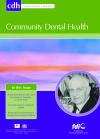Community Dental Health

- Cover Date:
- March 2008
- Print ISSN:
- 0265 539X
- Vol:
- 25
- Issue:
- 1
A randomised control trial of oral health education provided by a health visitor to parents of pre-school children
Objectives To determine the effect of oral health education carried out by a specially trained health visitor on the dental health of young children. Design and Setting Children, who were recruited during their 8-month distraction-hearing test, were randomly allocated to intervention and control groups. A home visit by the health visitor was arranged to parents in the intervention group who were given dental health advice. A second home visit, when the child was about 20 months old, focused on a completed diet record sheet and discussions about what and when the child was eating and drinking. Children in the intervention group received a toothbrush and toothpaste containing 440 ppm fluoride at both visits while those in the control group received the level of care usually provided by health visitors in the area. The children’s teeth were examined when they were three years old and two years later as part of a census survey of 5-year-old children in the area. Main outcome measures The numbers of decayed, missing and filled tooth surfaces. Results 251 children were recruited to the control group and 250 to the intervention group. At age three, they were examined; the mean dmfs scores were 2.19 (95% Confidence Interval: 1.41-2.97) in the control group (n=171) and 2.03 (CI: 1.39-2.67) in the intervention group (n=181). During the census survey 276 of the children in the study were examined at school. At this age the mean dmfs scores were 4.84 (CI: 3.39-6.29) in the control group (n=129) and 3.99 (CI: 2.54-5.04) in the intervention group (n=147). However, the mean dmfs of the remaining 2,253 children who were examined was 5.94 (CI: 5.55-6.33). Conclusions No statistically significant differences in mean dmfs scores were found between the control and intervention groups of children, although, as the children grew older, the gap between them widened. However, the mean dmfs score of other 5-year-olds in the area was significantly worse than that of children in the intervention group. Asking the control parents to take part in the study and examining their children at three years may have had an effect on their dental health status and have made it more difficult to detect any differences achieved by the programme.
Key words: Children, dental caries, dental health, paediatric toothpaste, oral health education
- Article Price
- £15.00
- Institution Article Price
- £
- Page Start
- 28
- Page End
- 32
- Authors
- H.F. Whitehead, C.M. Bishop
Articles from this issue
- Title
- Pg. Start
- Pg. End
- Editorial - Oral health promotion by the oral health products industry: unrecognised and unappreciated?
- 2
- 3
- Selecting a coherent set of indicators for monitoring and evaluating oral health in Europe: criteria, methods and results from the EGOHID I project.
- 4
- 10
- A comparison of two methods for the evaluation of the daily urinary fluoride excretion in Romanian pre-school children
- 23
- 27
- A randomised control trial of oral health education provided by a health visitor to parents of pre-school children
- 28
- 32
- The influence of social indices on oral health and oral health behaviour in a group of Flemish socially deprived adolescents.
- 33
- 37
- Development of a shortened Japanese version of the Oral Health Impact Profile (OHIP) for young and middle-aged adults
- 38
- 43
- The prevalence of enamel opacities in permanent teeth of 11-12 year-old school children in Kuala Lumpur, Malaysia.
- 55
- 58
